Analysis of the arrangement of the optical system of a Newtonian reflecting telescope

1.- Analysis and calculations of variables in the generation of images in a convergent lens.
2.- Calculations of variables in image generation in a diverging lens.
4.- Converging-converging lens arrangement in the optical system of a refracting telescope.
5.- Geometry implemented in the understanding of the algebraic formulation of thin lenses.
The purpose of this article is to analyze the optical system of a reflecting telescope (because it is composed of mirrors) and see how is the generation of images in each of the optical elements of the instrument, the constituent mirrors will do the job of reflecting the light rays from the object or body to be studied, therefore, we can say, that said instrument is structured by a pair of mirrors and a lens, a mirror that works as an objective, also called primary mirror, whose geometric characteristics are concave and, located at the end of the tube of said optical instrument, the light bounces on said concave polished surface, to then reach a secondary flat mirror of smaller size placed in a diagonal position.
The light that reaches the flat or secondary mirror will bounce towards an ocular lens, which is where we will observe the final image, then, the path begins with a concave mirror that serves as the objective of the telescope, then to a secondary mirror of smaller size and flat, and then reach an ocular lens, the above described can be seen in the following figure 1.
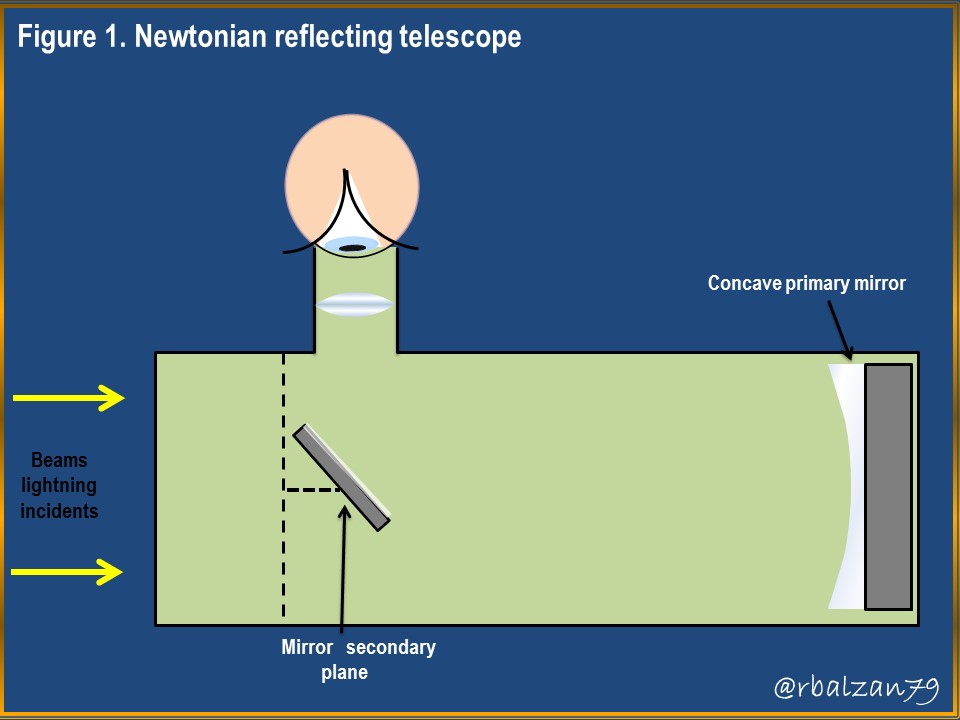
As you have observed, the light travels through the entire telescope tube until it bounces off the concave mirror. Let's analyze the behavior of the light rays in a concave spherical mirror, as shown in figure 2 below.
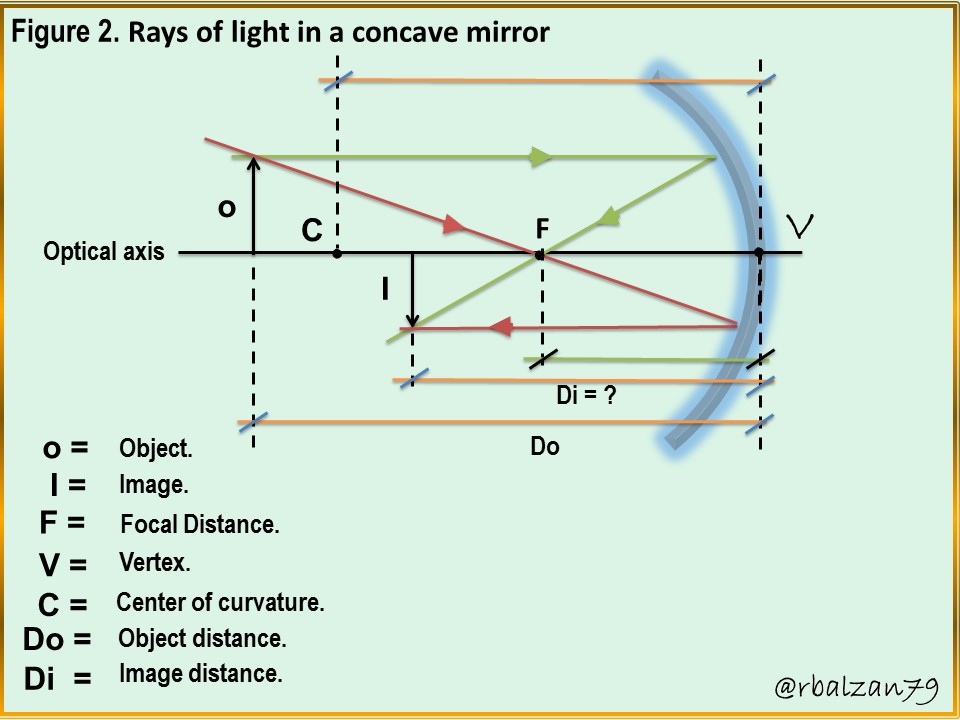
For this ray diagram in figure 2, in a concave mirror, we use two types of rays to locate the position and orientation of the image generated by the light rays coming from the body or object to be analyzed, one of these rays (green) leaving the object parallel to the optical axis which then passes through the focus of the mirror, the other ray (red), passes through the focus and, upon impact with the mirror is reflected parallel to the optical axis, the interception of both rays gives us the generation of the image.
The image in this case is inverted and smaller, because the object is before the center of curvature, for example, if the object is in the center of curvature, the image generated would be the same size as the object, but if it passes the center of curvature, then the image would be larger than the object and inverted, another feature to highlight, is that this image is real, because it has been formed on the same side where the object or body analyzed.
This image generated in the concave mirror will now reach the plane mirror (secondary) so we will analyze the behavior of the light rays in this plane reflecting surface, and this, through figure 3.
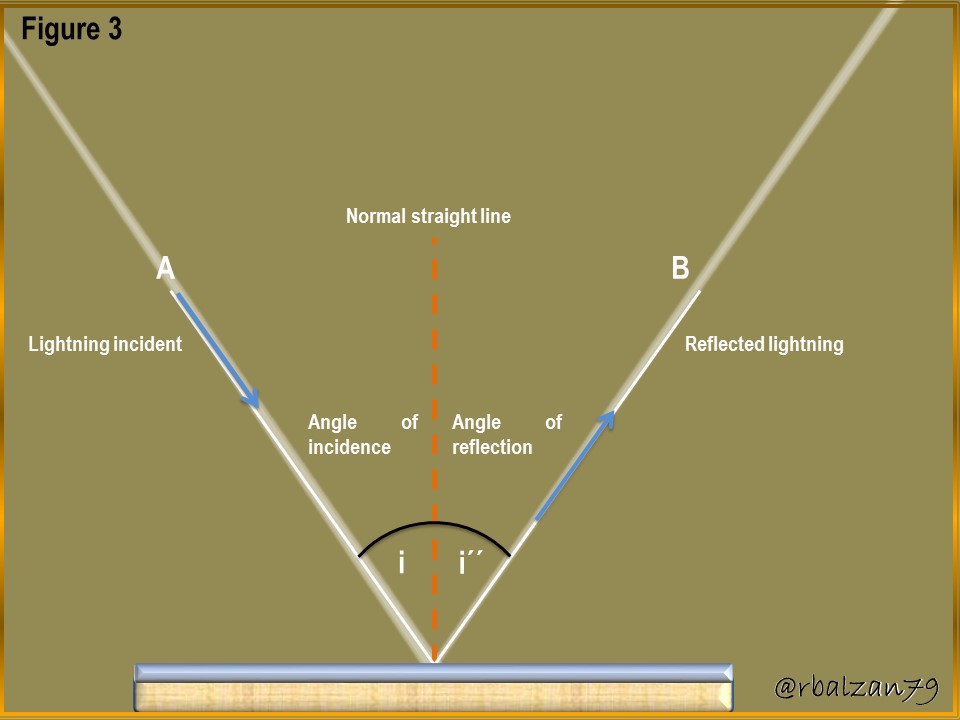
In the previous figure 3, we have how a has of light has been reflected on a flat reflecting surface, and, following the law of reflection, we notice how the angle of incidence is equal to the reflected angle (i = i'), so let's move to the following figure 4.

In this figure 4, we analyze the image received by the concave mirror, that is, an inverted image of the object, the formation of images in plane mirrors could be analyzed with the implementation of two light rays and a ray from the upper end of the image (blue) to the center of the plane mirror, this ray was reflected with an angle (θ') of the same value as the angle of incidence (θ), as the image in plane mirrors will always be generated on the other side of where the object or body is, then, we project the ray of incidence to the other side of the mirror, then with another ray (green), which we propagate parallel to the optical axis of the mirror, the reflection of this ray was carried out on the same ray, since the angle of incidence is 90° as well as the angle of reflection.
In the same way as the blue ray, with the green ray we also project this last ray behind the plane mirror, the projected lines intercept generating our required image and whose characteristics are; a virtual image, of the same size of the object and, not inverted, where, the distance of the object-mirror (Do) is the same as the distance of the image-mirror (Di), therefore, the image remained with the same characteristics with which it arrived at the plane mirror, that is to say, inverse, in relation to the orientation to the analyzed object, in this way we then go to the eyepiece lens and, see how this lens sends the image to our retina, this will be observed in the following figure 5.
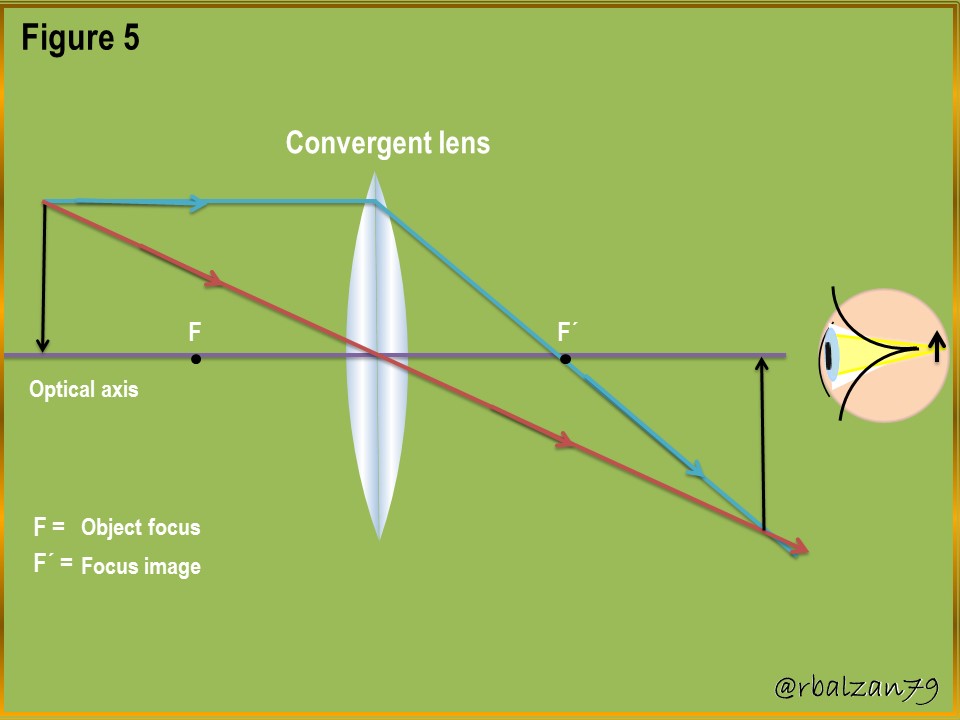
In the previous figure 5, we use two light rays, one (blue) parallel to the optical axis and the other (red) passing through the center of the convergent lens, this type of lens as we have seen in previous articles related to this type of lenses, one of its main features is to flip the image it receives, as we see in the diagram of light rays of a convergent lens, the image then reaches the retina of the person watching right and reach our brain inverted.
Conclusion
A great number of optical instruments have been designed throughout our history with the purpose of making the best use of the phenomenon of light and, in this way, to be able to appreciate in the best way the wonderful world that surrounds us, among these optical instruments, without a doubt, telescopes have been essential to explore our outer space, we fulfilled the purpose of this article, which was to analyze the path of the generation of the observed image of an object and, this through the entire optical system of a Newtonian reflecting telescope, which is constituted by mirrors.
Therefore, we went from optical element to optical element, that is, from concave mirror as primary element, then from plane mirror (secondary element) to see through a convergent lens located in the eyepiece of the Newtonian reflecting telescope, from the concave mirror we continue to corroborate its particular characteristics, that is to say, it generates a real, inverted image and, while approaching the center of curvature of the concave spherical mirror the image will approach the size of the object and, when it passes the center of curvature the image will be larger than that of the object, but, it will still be inverted.
When we arrived at the flat mirror, we were able to analyze the image received from the concave mirror, that is, inverse, where, the flat mirrors always generate virtual images, that is, on the other side of where the object is, of the same size, right (not inverted), that is how it receives an image in the same way it projects it, we also noticed the same distance between mirror-object that of the mirror-image, this we could check when we place ourselves in front of a completely flat mirror.
From the plane or secondary mirror the image arrived inverted (in relation to the orientation of the initial object) and, from there, we continue demonstrating the characteristics of this type of convergent lens, that is, generation of a real image, capacity to invert the generated image of the object, so all this led us to the following path of the projected image in each particular optical element, concave mirror, plane mirror and convergent lens, and this, you can visualize it in the following Figure 6.
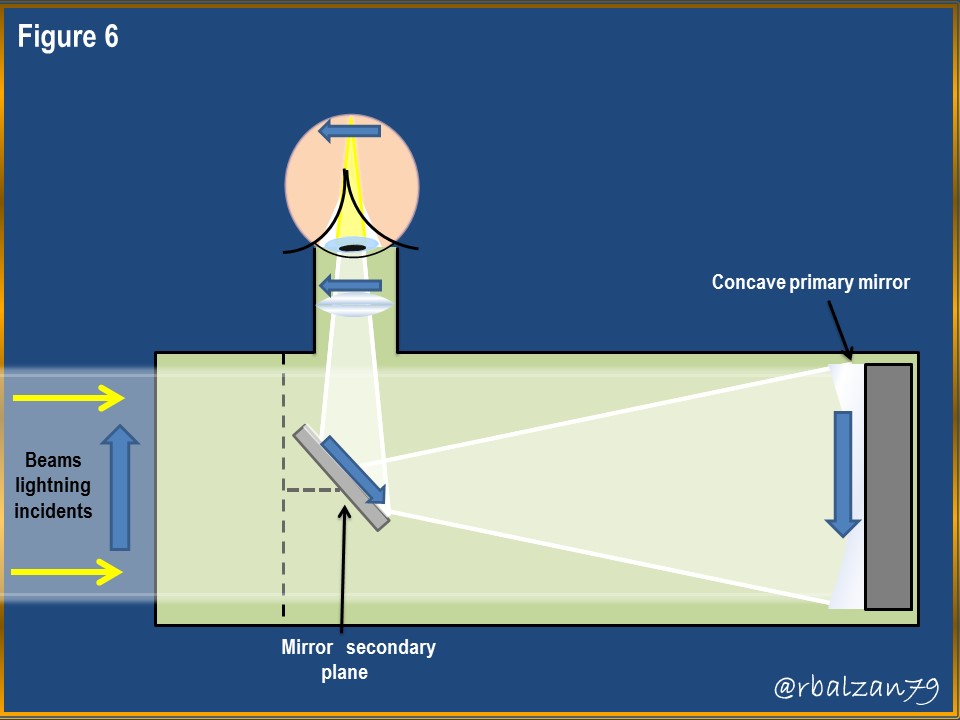
In this way they were able to visualize the image that reaches the retina of the person observing through this type of Newtonian reflecting telescope with the optical system described above, if they observe the image arrives straight to the retina and the brain will flip it back, only, according to the position of the observer in the telescope, the inverted image will be seen axially.
Until another opportunity my dear friends.
Note: The images were created by the author using Power Point and Paint, the animated gif using PhotoScape.
Recommended bibliographic references
[1] GEOMETRIC OPTICS. Link.
[2] Convergent lenses. Link..
[3] Ray diagram in concave mirrors. Link..
[4] I. Reflective and Refractive Telescopes. Link.
[5] Images in Planemirrors. Link.
Thanks for your contribution to the STEMsocial community. Feel free to join us on discord to get to know the rest of us!
Please consider delegating to the @stemsocial account (85% of the curation rewards are returned).
You may also include @stemsocial as a beneficiary of the rewards of this post to get a stronger support.
Thank you for the valuable support dear @STEMSocial community. Regards.